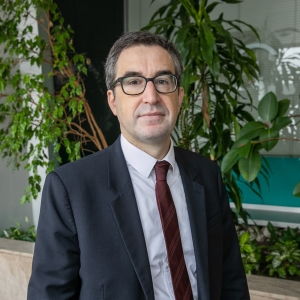CNP Assurances: Responsible investment ‘showcase’ excites
After becoming the first European insurance company to publish a green bond framework in June, CNP Assurances on 20 November attracted close to €2bn of demand to a €750m long 30NC10 Tier 2 issue and achieved its lowest ever coupon on such debt. CNP’s Jean-Philippe Médecin and Stéphane Trarieux explained to Bank+Insurance Hybrid Capital how the issuance fits in with the insurer’s wider contribution towards a decarbonised economy.

Bank+Insurance Hybrid Capital: What is CNP Assurances’ motivation for issuing green bonds? How does it fit in with the company’s overall sustainability strategy and commitments?
Jean-Philippe Médecin, director for funding and own assets management, CNP: CNP Assurances Group has applied an ESG strategy in its asset management activity since 2006, when specific criteria were implemented for the equity portfolio. In 2011, we committed ourselves to respecting the UN Principles for Responsible Investment. In 2015, a global climate strategy was established. Finally, in 2018 then again in 2019, we committed to make €5bn in green investments from 2018 to 2021, an objective that has already been reached.
These initiatives, on top of others which we won’t go into here, show our strong commitment in favour of the energy and environmental transition. It therefore seemed completely natural to us to complete this policy with an innovation in our financial policy, with the launch of our inaugural green bond transaction.
BIHC: What are the use of proceeds of the transaction?
Stéphane Trarieux, head of funding, CNP: The use of proceeds are described in our framework published in June (which was the first in Europe released by an European insurance company). The net proceeds will exclusively finance or refinance, in full or in part, assets falling under three eligible green assets categories: high energy-performance buildings (new builds and renovations); sustainably-managed forests; and green infrastructure, such as renewable energy projects and means of transport with low CO2 emissions. Those assets are intended to contribute to three main environmental objectives: climate change mitigation, biodiversity protection, and pollution prevention.
BIHC: Your first green bond had been expected somewhat earlier — can you explain how the timetable evolved?
Médecin, CNP (pictured below): 2019 has been an active year for CNP Assurances, with several corporate events. As you know, we are in the process of welcoming a new controlling shareholder, La Banque Postale. Moreover, we signed in September 2019 a new agreement with our banking partner in Brazil, Caixa Econômica Federal. As a responsible issuer, we did not want to launch a new transaction before market participants have received comprehensive information about these developments. Finally, we considered that it was more responsible to issue after our Q3 results releases, in the context of the sharp decrease in interest rates that occurred this summer.

BIHC: There have been some questions over the applicability of the green bond concept to both insurance companies’ business models and also to capital instruments — what are your thoughts on this?
Trarieux, CNP: Insurance companies like CNP Assurances can choose to be socially responsible investors. We think we can demonstrate a strong influence on society and the natural environment through our investment policy, given the size of our portfolio (€279bn of assets under management integrating ESG criteria). Having said that, it is true that issuing green capital is quite innovative. Being the first European insurance company to publish a green bond framework, we took the view that having a subordinated bond as a host instrument was not an issue in relation to the Green Bonds Principles, and that there was no difficulty to be faced with our supervisor. On this specific point, it is worth mentioning that the use of proceeds language does not contradict the objective of obtaining the regulatory capital treatment. The instrument is compliant with Solvency II requirements for eligible own funds.
BIHC: What were the key messages you wanted to convey to investors during premarketing? How did they respond and did they focus, either positively or negatively, on any particular aspects?
Médecin, CNP: Firstly, we wanted to convince investors of the strength of our longstanding green commitment (since 2006 regarding the equity portfolio). Secondly, we wanted to detail our green investment strategy by highlighting concrete projects to the extent they could be found in the framework. We received enthusiastic feedback from investors, with some astonishment regarding the forestry investments. The investors were not all aware that CNP Assurances is the biggest private owner of forests in France. Forests are attractive because they strengthen CO2 capture, while delivering a proper long term yield. Regarding real estate, we have shown how new builds and renovations constitute an economic activity that contributes fully to the transition towards a decarbonised economy.
BIHC: What determined the choice of the 30 non-call 10 Tier 2 euro benchmark at this time?
Trarieux, CNP (pictured below): We have explained to the market and to the rating agencies that we intend to manage dynamically our portfolio of debt instruments, optimizing the fixed charges and rating agency requirements. That is why for each issuance we retain the flexibility whether or not to opt for the 30 non-call 10 format, which is more expensive, but implies better treatment with our two rating agencies. We also felt it was good timing for this transaction, with almost €3bn of debt coming to its first call date or maturity between 2020 and 2022.

BIHC: How do you feel about the outcome of the transaction?
Médecin, CNP: We are very satisfied with this transaction, which opens a new financing market for us at a very reasonable cost. The 2% coupon is the lowest ever for CNP Assurances for Tier 2 capital. Moreover, it is a nice showcase for our responsible investment policy.
BIHC: How, if at all, did the green aspect affect distribution and pricing?
Trarieux, CNP: We appreciate that the vast majority of investors in this transaction are ESG-driven. Hence, we consider that we obtained welcome investor diversification, including pure green funds.
Overall, we consider there is a small green premium that allowed us to price slightly inside the fair value of a similar non-green instrument.
BIHC: What are your plans for green bond issuance going forward?
Médecin, CNP: We think this market will develop, and we will of course be part of it. On the other hand, some clarification is expected from European authorities, in order to normalize standards.
BIHC: Is there anything else about your green strategy or the deal that you would like to highlight?
Trarieux, CNP: It has been a great experience for the funding team, bringing together our CSR colleagues and the real estate and infrastructure investment specialists. As you can imagine, we usually have the same type of recurring questions during our roadshows; this time, it was very different, with exciting discussions and very pertinent questions asked by the green investor community.
